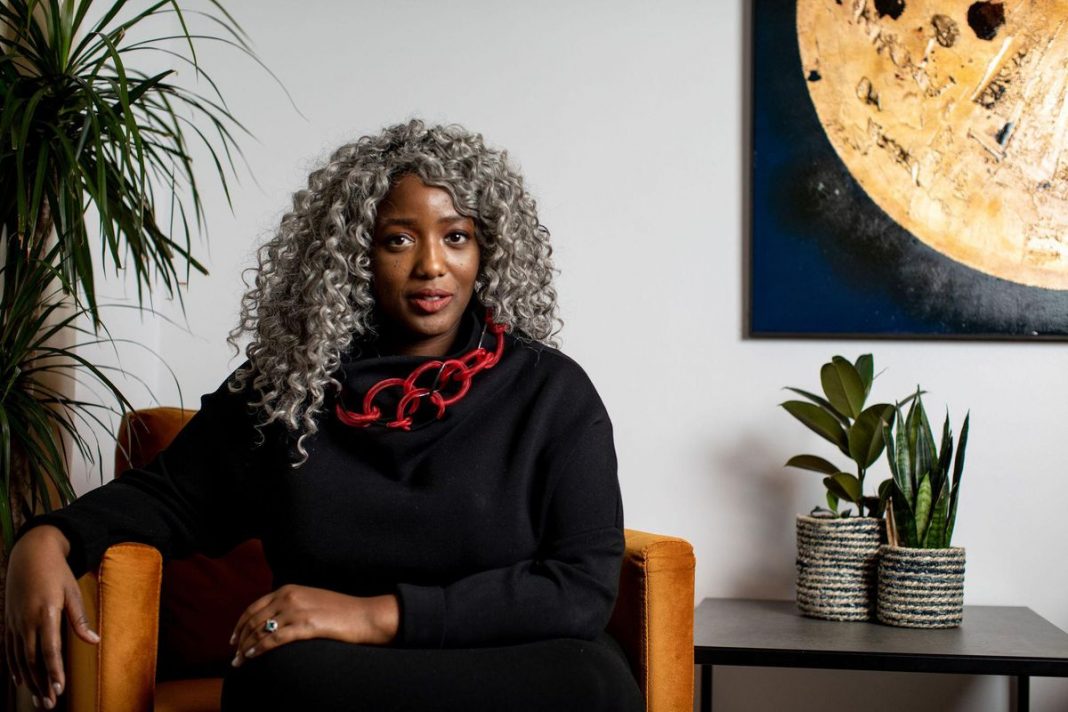
Dr Anne-Marie Imafidon, MBE, shares her insights on the barriers still facing young women getting … [+]
Anne-Marie Imafidon
A survey by UK education provider QA published in 2019 found that more than half of young women would be interested in a career in STEM but 78% were discouraged by gender inequality. Though there has been a greater uptake of science, technology, engineering or maths (STEM) A Levels by young women in the last few years, the barriers they face still loom large and after a year of shutdowns in schools, universities and businesses across the world, these figures look set to rise – in fact, according to STEM Women, 60% of female STEM students feel they have had their future career prospects affected by the pandemic.
This isn’t about fighting for equity for equity’s sake. The need for more women to enter STEM careers, particularly those from historically marginalised backgrounds, is vital – for innovation, for safety and for profit.
This sits at the heart of the work of Dr. Anne-Marie Imafidon MBE, the co-founder of the award-winning STEMettes – an award-winning social enterprise working to encourage the next generation of girls and non-binary people into STEM.
Recognised as a ‘genius’ mathematician from a young age, Anne-Marie’s achievements are formidable and she has long been a champion for women in STEM. Gaining an A Level in Computing at 11, she went on to become one of Oxford University’s youngest ever Master’s degree graduates, an MBE holder (awarded for her work championing and guiding young women into STEM) and is regularly voted one of the world’s leading women in tech.
Since its inception, the STEMettes has reached over 45,000 young people across the UK and Ireland and continues to campaign businesses, governments, educational institutions and adults working with or caring for young people to continue fighting for better diversity and inclusion across these industries.
So what are we to do about it? How do we open the doors for more young women to enter the world of STEM, particularly within the current climate, where lost learning, lack of resources and conversation have left many feeling alienated from the industry?
“It starts by recognising the barriers these young women still face in the first place,” observes Anne Marie.
Here are the main barriers Anne-Marie recognises as facing young women today – and what parents, carers, educators and employers can do to help them overcome them.
Perception
For a lot of young women and non binary people, Anne-Marie says, there’s a “social norm” around who works in STEM and that social norm is white men. “Many of the young people we meet through the STEMettes internalise this idea that STEM is not something for them or something they can do.” This, she says, is something they pick up from the exposure they get to the industry at home, school and from the media, which then leads to their conditioning.
How to help: “Parents, carers and teachers need to continually expose young people to diverse STEM role models,” Anne-Marie recommends. “Make it normal for them to learn about people working in a variety of roles and from a variety of backgrounds.” STEM industry professionals – particularly those who diversify from the traditional mould either in their work or background – might consider offering mentorship.
Awareness
Another misconception Anne-Marie witnesses time and again through her work is that STEM careers have to look a certain way. “It’s not uncommon for young people to think STEM careers are boring, lacking in creativity or solely focused on making more money for the corporate world, so we’re constantly looking for ways to expose them to the nuance of options out there.” This, she says, typically comes from a lack of exposure to people working in STEM industries.”Our students often think the only thing you can do with a degree in Maths or Science is becoming a teacher. Though that’s obviously an excellent option for some, there’s a whole host of other jobs in the field, some of which don’t even exist yet and they could create for themselves.”
How to help: Organisations with STEM departments can work with initiatives such as the STEMettes or with school networks to offer company visits, hands on sessions and school trips – all of which help young people get a better idea what STEM careers can really look like and what options might be out there.
Networks
Most young people lack what Annie-Marie terms “STEM capital” – connections with people in the industries they’re interested in. Without these, she says, it can be hard for them to both see themselves working in those roles and develop the often necessary network of connections that provide opportunities in the future. It can be hard for them to develop the confidence needed to put themselves forward. “If you’re interested in being, say, an astronaut but have no connections to anyone already doing that job, it’s much harder to get your foot in the door.”
How to help: Parents and carers can petition schools to bring in more people working within STEM to meet students. Those either working in interesting STEM roles or with connections to people who are, says Anne-Marie, might consider contacting their local schools or youth networks to start building those networks. “We need more people proactively reaching out to young people (through the appropriate channels, of course) and sharing their own networks.”
“Opportunity,” Anne-Marie concluded, “is what sparks motivation. If we can create more opportunities for these young women to explore and to meet people who can help them, they’ll start to understand that finding success in STEM is rarely about genius or talent we were born with. It’s about remaining motivated to explore and show up to do the work every day.”
For more information on Dr. Anne-Marie Imafidon, MBE take a look at her website or visit the STEMettes to find out more about how they work with young people today.




